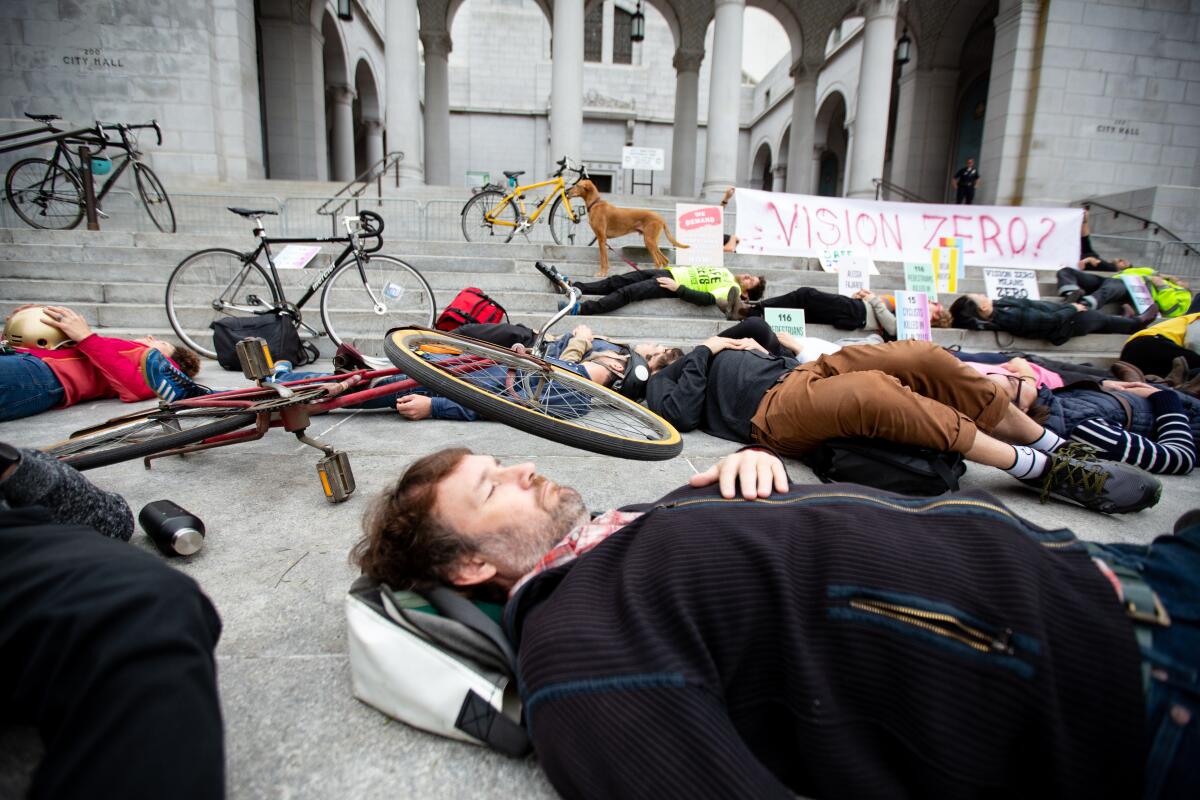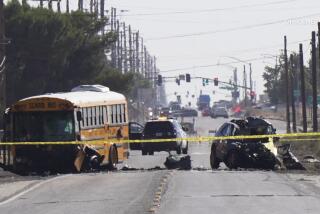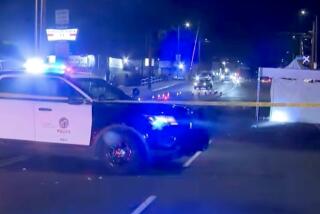L.A. traffic deaths rose in 2022, surpassing 300 fatalities for first time in two decades

- Share via
Traffic deaths climbed again in Los Angeles last year, with 300 people killed on city streets — the highest number in at least two decades, city officials said.
According to Los Angeles Police Department data, 312 people were killed in traffic collisions last year, 5% more than in 2021 and a 29% increase over 2020.
L.A.’s streets remain particularly deadly for pedestrians and bicyclists, with 159 people killed in collisions involving pedestrians and motorists, a 19% rise compared with 2021, and 20 people killed in collisions involving bicyclists and motorists, an 11% rise.
The traffic carnage in L.A. in 2022 outpaced national trends.
The National Highway Traffic Safety Administration reported that fatalities from traffic crashes were essentially flat nationwide in the first nine months of 2022 compared with 2021. Fatalities among cyclists and pedestrians rose nationwide last year but were lower than the percentage rise seen in L.A.
The L.A. figures dismayed activist groups, which have long urged City Hall to devote more funding and staff toward Vision Zero, the city’s program to end traffic fatalities by 2025.
“It’s frustrating and infuriating,” said Damian Kevitt, executive director of the nonprofit group Streets Are For Everyone. “All of these fatalities are preventable.”
Connie Llanos, interim general manager of the L.A. Transportation Department, said Angelenos need to “recognize that how we drive can either save lives or take them.” Such fatalities disproportionately involve children, seniors, and the unhoused in communities of color and poor neighborhoods, Llanos said.
“No one should accept this,” she said.
According to the Police Department, the “greatest-risk intersections” in 2022 were Soto Street and Washington Boulevard in South L.A., Florence and Vermont avenues in South L.A., Balboa Boulevard and Saticoy Street in Lake Balboa, and Cahuenga Boulevard and Selma Avenue in Hollywood.
A spokesperson for the city transportation department said 242 people were killed in collisions in 2003, the first year that data were readily available. In 2015 — the year that then-Mayor Eric Garcetti unveiled Vision Zero — 186 people died in traffic fatalities.
The Vision Zero program is predicated on the belief that fatal traffic collisions can be prevented through engineering and education. The program has proved effective in Europe, where it began in Sweden more than two decades ago, and in New York City, which adopted it in 2014.
New York City officials reported last week that overall traffic fatalities fell in 2022 by 6.6%, while pedestrian fatalities fell by 6.3%. Overall, traffic deaths have fallen by a third since the year before Vision Zero began, according to the city.
Michael Schneider, chief executive of the advocacy group Streets for All, is among those calling for L.A. to stop paying “lip service” to Vision Zero and make real infrastructure changes. He said L.A.’s streets are designed for drivers’ convenience, be it through parking stalls or speed limits.
“If we want these numbers to come down, we have to build our streets to first protect lives,” Schneider said.
More to Read
Sign up for Essential California
The most important California stories and recommendations in your inbox every morning.
You may occasionally receive promotional content from the Los Angeles Times.










